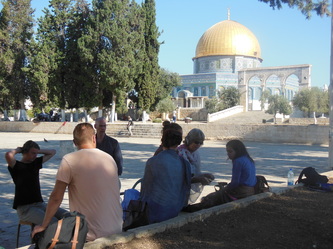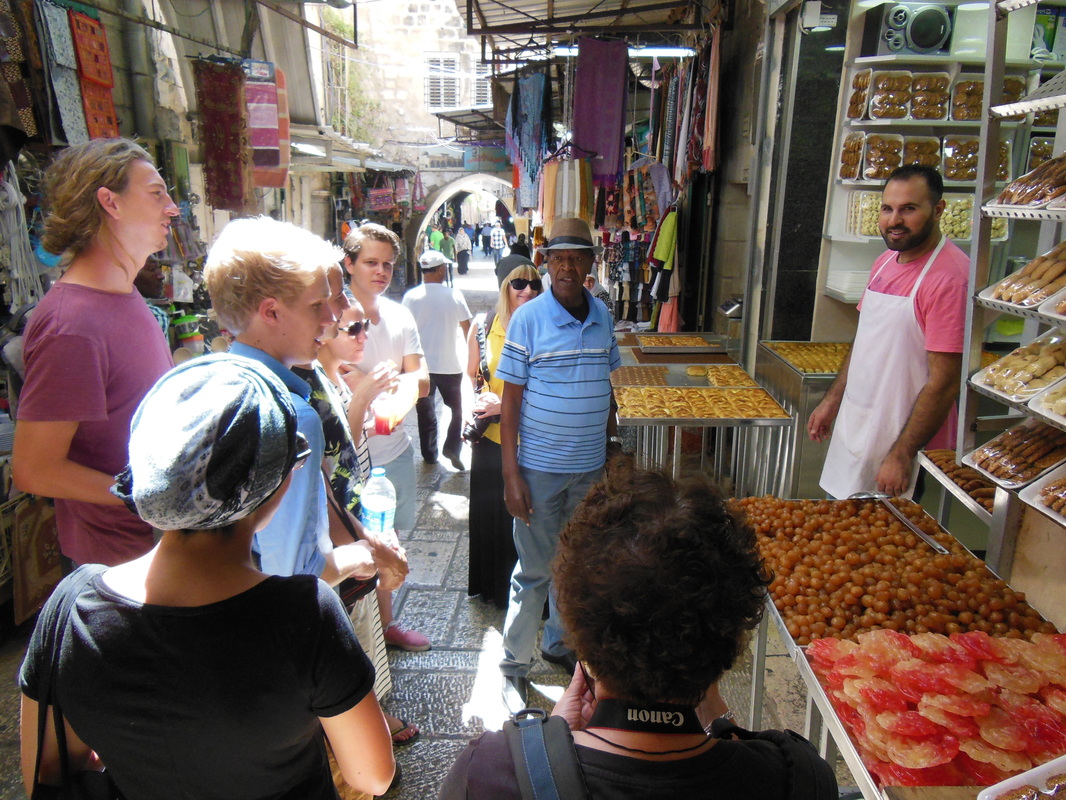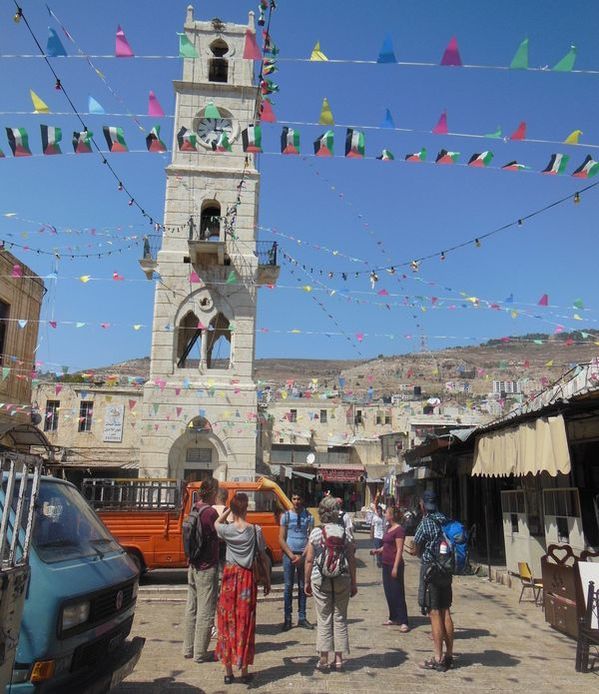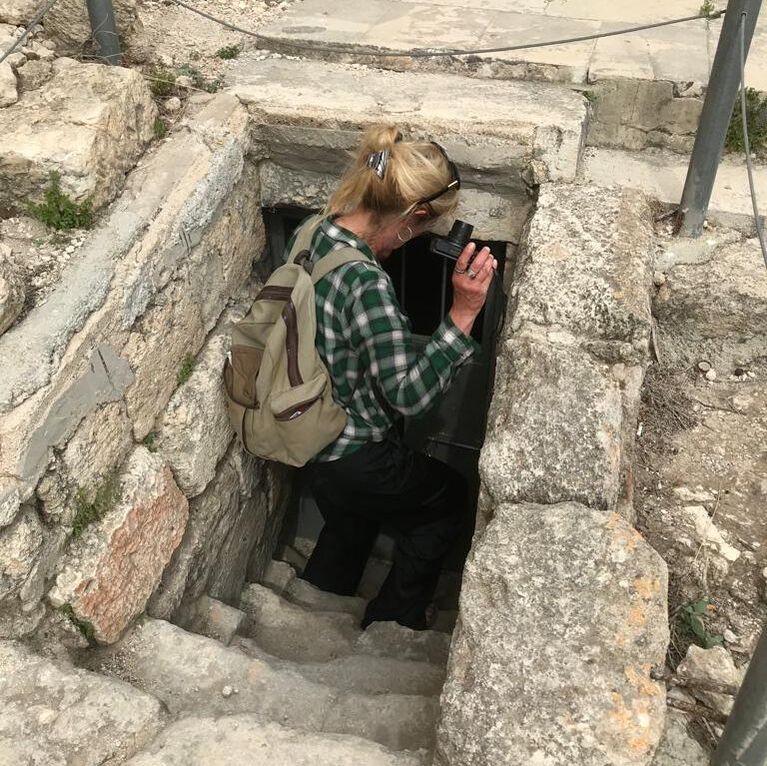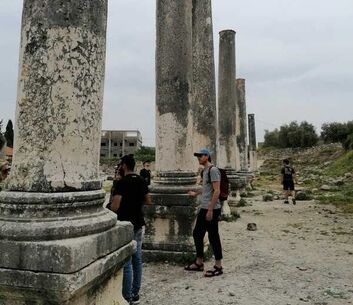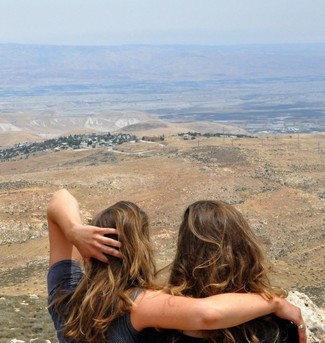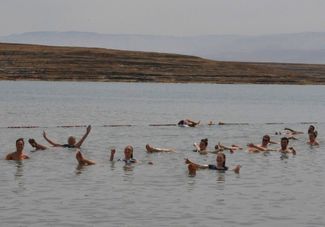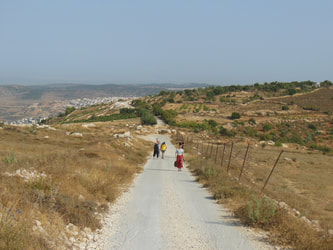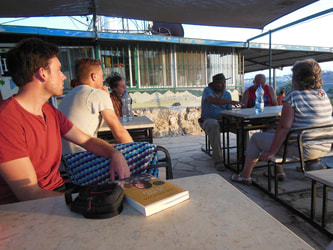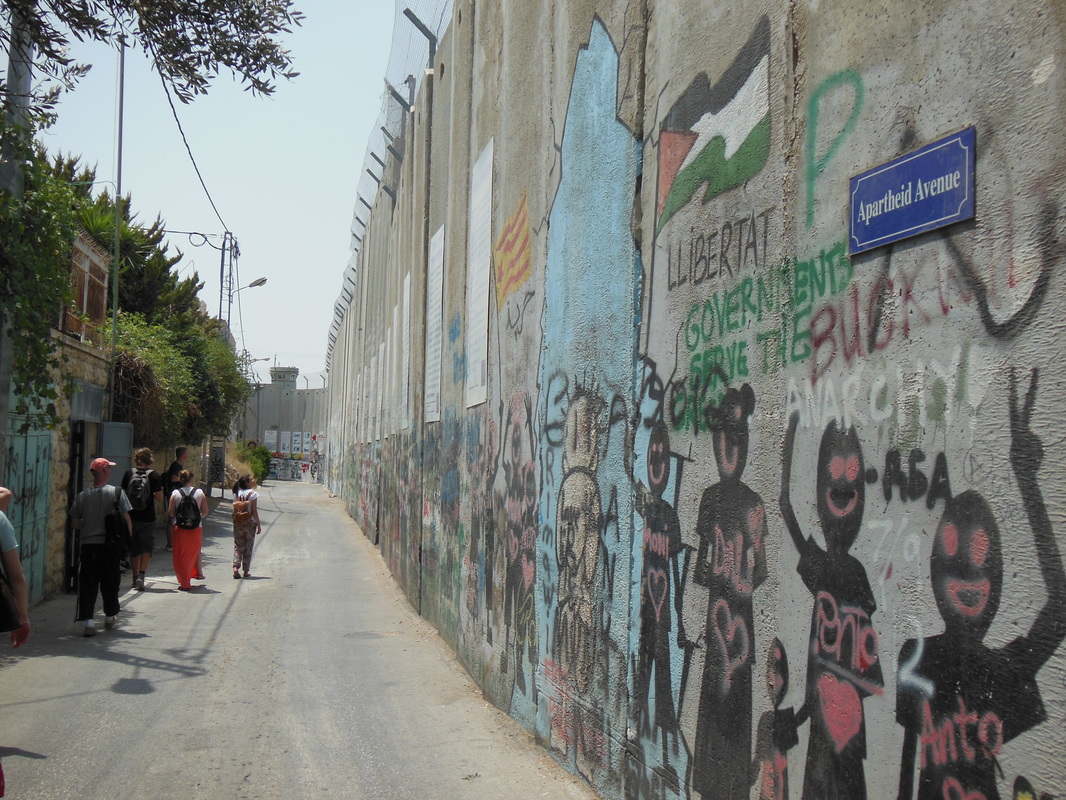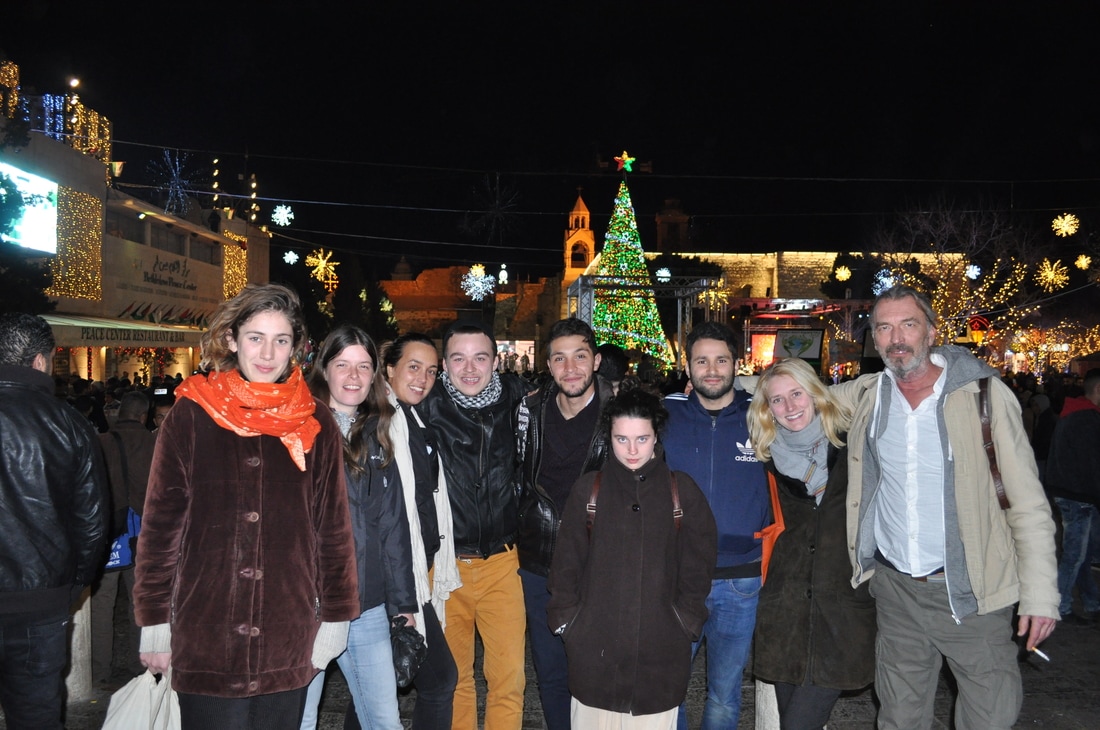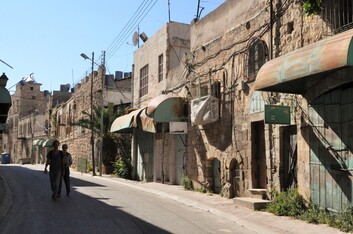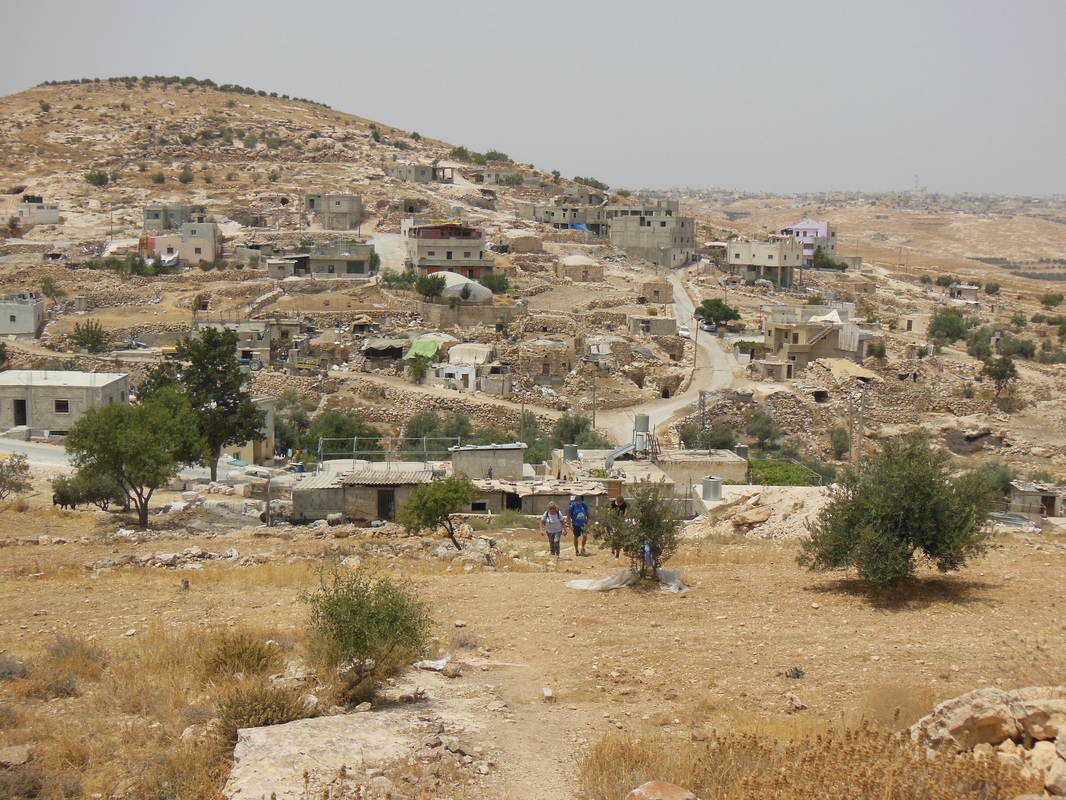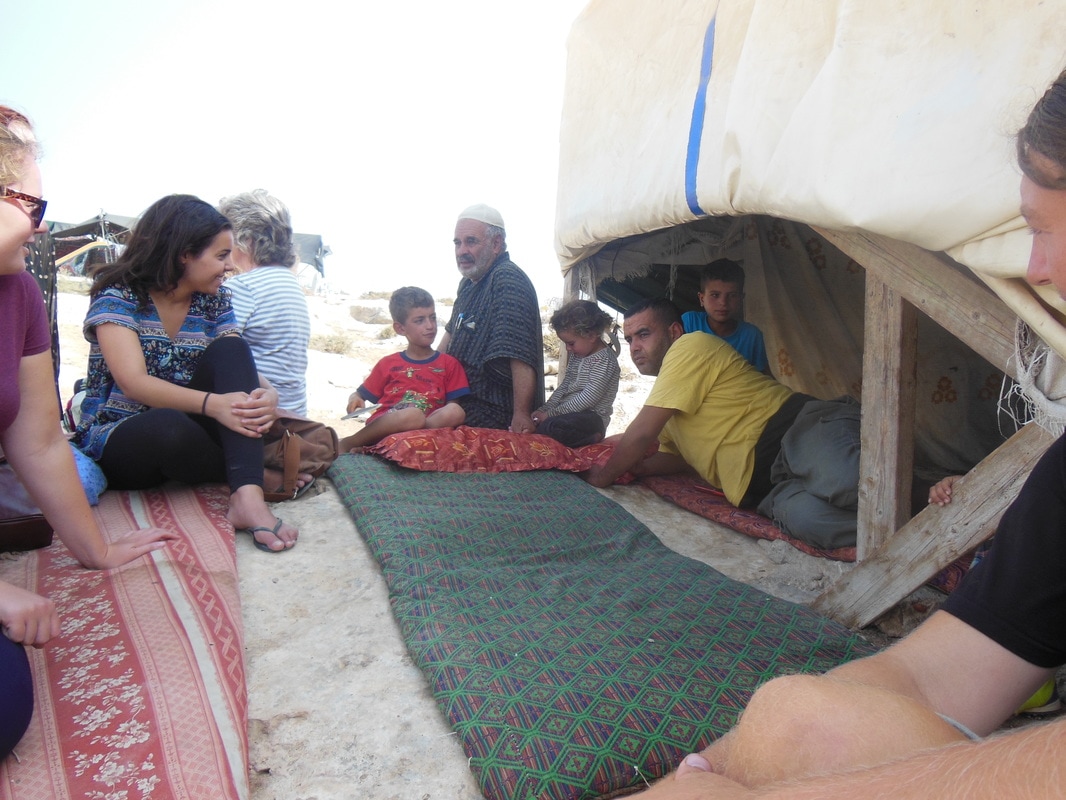During a round trip, we usually visit the places below (situation permitting). We made a short description of some of the things we tend to do and see in these places.
Jerusalem (Al-Quds)
|
In our journey through Palestine, this is often the first place to go to after arriving at the airport of Tel-Aviv. Generally speaken, the eastern part of Jerusalem is Palestinian, the western part of Jerusalem is Israeli. We spend our nights in the Palestinian part of the Old City, the old walled part of Jerusalem. You will experience an eruption of scents, colors, and sounds in the small streets with its countless merchants. Jerusalem contains the most disputed square mile in the world. This includes the Al Aqsa mosque, the Wailing Wall, the Haram al-Sharif, and Golgotha, to name a few. These are all central places in Judaism, Islam and Christianity.
We will visit these historic places and the Mount of Olives, which offers a panoramic view over the city. We get a very different perspective by walking through the Old City with our friend Ali, who tells us about the daily life in his city and neighborhood in the African Quarter. |
Ramallah
Nablus
|
Nablus is an ancient city in northern Palestine where life is bustling. We join a tour by a local guide. We make new friends in cafes, where we are immersed in tasty juices, tea, coffee, sandwiches and sweets.
It is often possible (men and women separately) to visit the hammam, the ancient bathhouse. We also visit Human Supporters Association, an organization that works with children and seeks nonviolent ways of resistance in Nablus. We may visit Balata, the largest refugee camp in Nablus. |
Sebastia
Dead Sea
Nahalin (Tent of Nations)
|
The Tent of Nations is the peace project of the Nassar family on a farm located in Area C. We usually spend a couple of nights here, from where we visit Bethlehem and Hebron during the day. We will also stay on the farm for a day.
These days is is possible to work and help out on the farm, everyone according to their own ability and preference. You may help by harvesting, watering, planting trees, preparing food, taking care of the animals, or doing construction work. These days are also a good opportunity to relax and to think things over. When it gets dark we light a campfire, talk to each other, and hear the stories of Daoud, Daher, Amal and Milade Nassar. |
Bethlehem
|
Besides being a major historical attraction which attracts lots of tourists, Bethlehem is a city with refugee camps and a huge wall. Among other things, we walk along this separation wall. Here we can see the graffiti texts and other ways of resistance through art, by the likes of Banksy. We visit the infamous checkpoint 300, the local souk and Aida camp, a refugee camp where some people have lived for over 60 years and another generation is again growing up. In Bethlehem are also many religious and historical sites, such as the church of nativity of Jesus.
|
Hebron (al-Ghalil)
|
Hebron is an impressive city. In the middle of this large Palestinian city live extremist Jewish settlers, who are heavily protected by the Israeli army. There is a lot of tension between the population groups due to the settler presence.
We walk through the old city center with our local guide. They show us how difficult the living conditions are in a city that is controlled by settlers and soldiers from the rooftops. Further, a filmmaker is visited, and our friend Laila from the cooperation Women in Hebron. |
Villages in the South Hebron Hills
|
Villages like At-Tuwani and Susya are under enormous pressure from settlers and Israel's army to make way for settlements.
In Susya there is much international interference, this has led to outcry and tentative postponement of destruction. In At-Tuwani, there is also a very strong community that offers resistance. Several villages in the area have already been ethnically cleared. |
